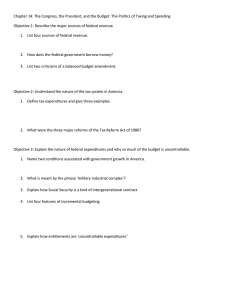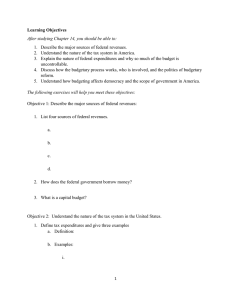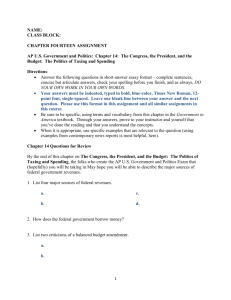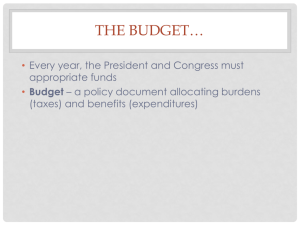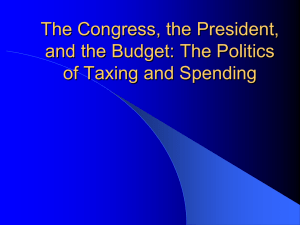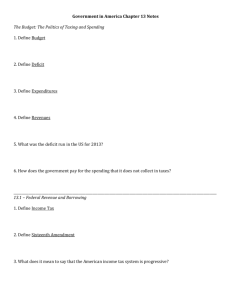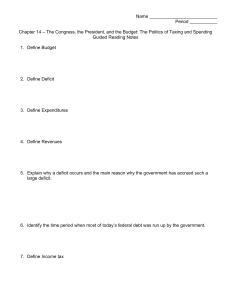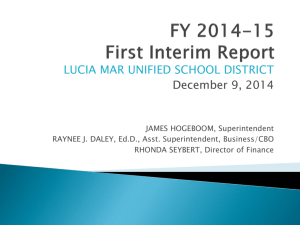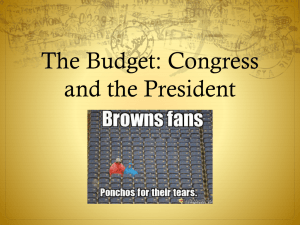Ch 14 Review Packet - Kenton County Schools
advertisement
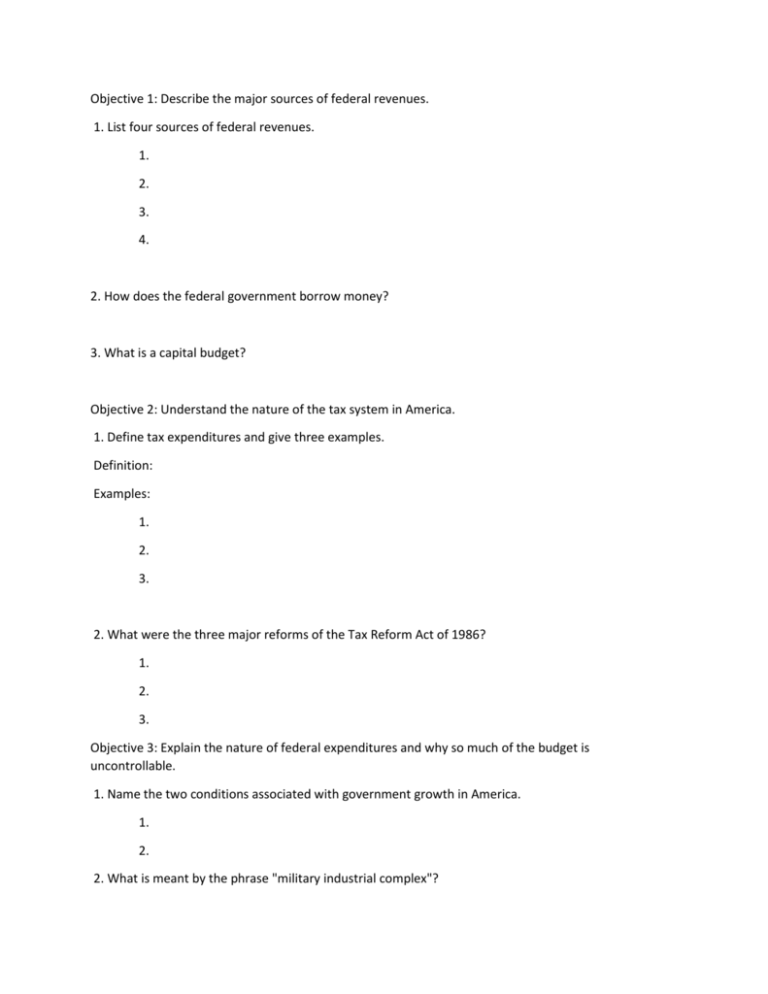
Objective 1: Describe the major sources of federal revenues. 1. List four sources of federal revenues. 1. 2. 3. 4. 2. How does the federal government borrow money? 3. What is a capital budget? Objective 2: Understand the nature of the tax system in America. 1. Define tax expenditures and give three examples. Definition: Examples: 1. 2. 3. 2. What were the three major reforms of the Tax Reform Act of 1986? 1. 2. 3. Objective 3: Explain the nature of federal expenditures and why so much of the budget is uncontrollable. 1. Name the two conditions associated with government growth in America. 1. 2. 2. What is meant by the phrase "military industrial complex"? 3. Explain how Social Security is a kind of intergenerational contract. 4. List four features of incremental budgeting. 1. 2. 3. 4. 5. Explain how entitlements are "uncontrollable expenditures." Objective 4: Discuss how the budgetary process works, who is involved, and the politics of budgetary reform. 1. How might each of the following political actors have a stake in the federal budget? Mayors: Defense contractors: Scientists: Bureaucratic agencies: Members of Congress: Presidents: Farmers: 2. List the ten main actors in the budgetary process. 1. 2. 3. 4. 5. 6. 7. 8. 9. 10 3. Explain the three main provisions of the Congressional Budget and Impoundment Control Act of 1974. 1. 2. 3. 4. What is a budget resolution? 5. Explain the two ways in which laws are changed to meet the budget resolution. 1. 2. 6. What was the Gramm-Rudman-Hollings Act and why did it fail? Objective 5: Understand how budgeting affects democracy and the scope of government in America. 1. List three possible explanations for the substantial growth of government in twentieth-century democracies. 1. 2. 3. 2. How could the budgetary process limit government? KEY TERMS Identify and describe: Budget deficit expenditures revenues income tax Sixteenth Amendment federal debt tax expenditures Social Security Act 237 Medicare incrementalism uncontrollable expenditures entitlements House Ways and Means Committee Senate Finance Committee Congressional Budget and Impoundment Control Act of 1974 Congressional Budget Office (CBO) budget resolution reconciliation authorization bill 238 appropriations bill continuing resolutions Compare and contrast: budget and deficit expenditures and revenues income tax and Sixteenth Amendment income tax and tax expenditures Social Security Act and Medicare uncontrollable expenditures and entitlements House Ways and Means Committee and Senate Finance Committee reconciliation and authorization bill Name that term: 1. This policy document allocates burdens and benefits. _________________________ 2. This is all of the money borrowed over the years and still outstanding. _________________________ 3. This was intended to provide a minimal level of sustenance to older Americans. _________________________ 4. These revenue losses are attributable to provisions of the federal tax laws that allow a special exemption, exclusion, or deduction. _________________________ 5. This policy suggests that the best predictor of this year’s budget is last year’s budget, plus a little bit more. _________________________ 6. These result from policies that make some group automatically eligible for some benefit. _________________________ 7. This agency advises Congress on the probable consequences of its budget decisions. _________________________ 8. This occurs in Congress every April. _________________________ 9. This is an act of Congress that actually funds programs within limits established by authorization bills. _________________________ 10. These allow agencies to spend at the previous year's level. _________________________
